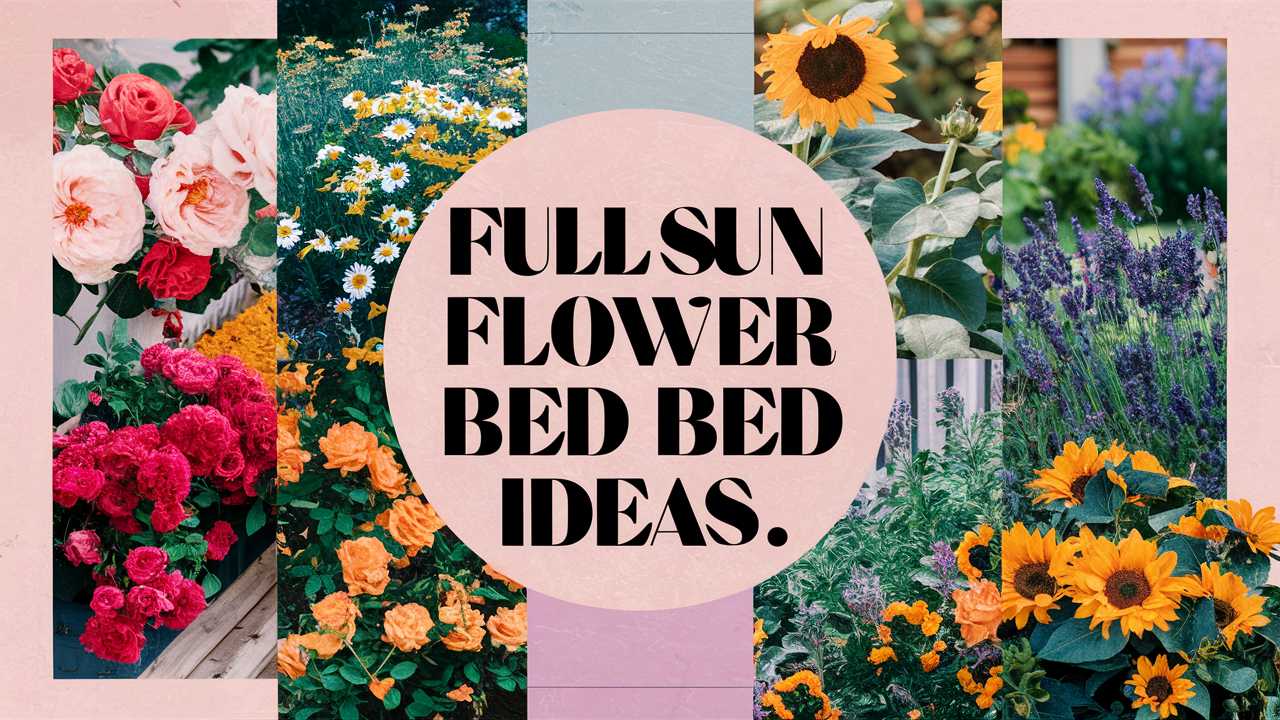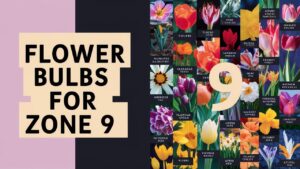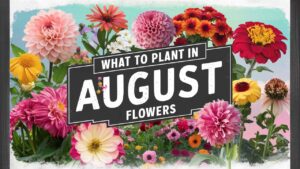In this post, we’ll explore various ideas for designing a full sun flower bed, including plant choices, layout tips, color schemes, maintenance strategies, and more. So grab your gardening gloves and let’s dig in!
Choosing the Right Plants
When it comes to selecting plants for a full sun flower bed, the options are endless. However, not all flowers are created equal in their sun requirements, so it’s crucial to choose varieties that can withstand the heat without wilting. Here are a few standout options to consider:
Coneflowers (Echinacea)
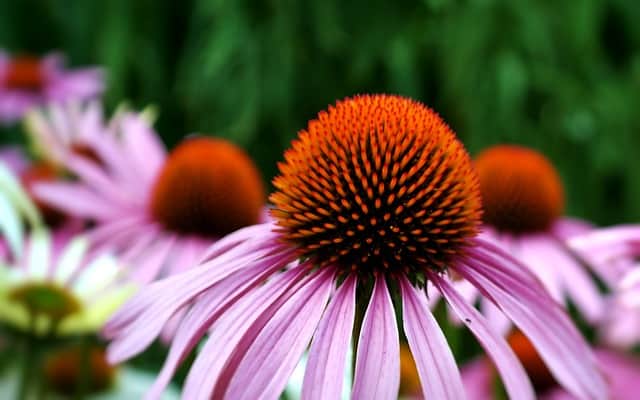
Coneflowers are perennial favorites that are hardy in various climates. They boast a robust structure and large, daisy-like blooms in shades of purple, pink, and white. Not only do they thrive in full sun, but they also attract butterflies and other pollinators.
Black-eyed Susans (Rudbeckia)
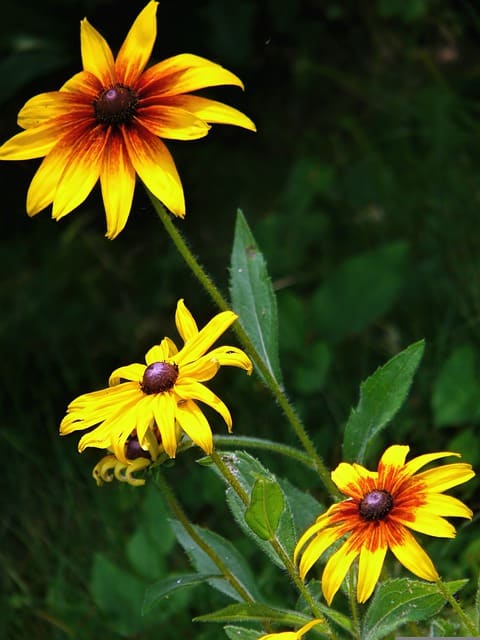
These cheerful yellow flowers are synonymous with summer landscapes. Black-eyed Susans can grow in a variety of soils and are drought-tolerant once established. Their bold blooms will provide a sun-kissed look to your flower bed.
Lavender (Lavandula)
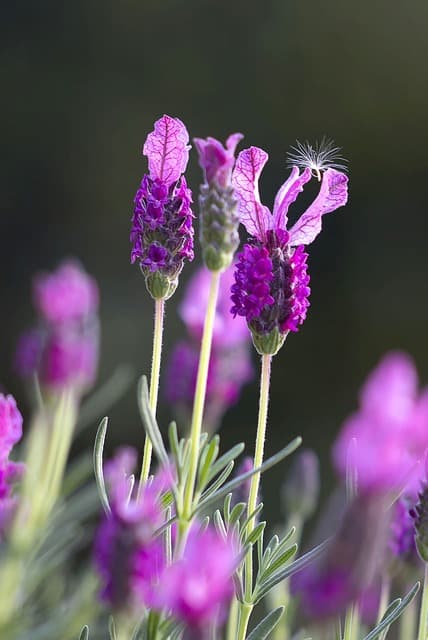
Known for its delightful fragrance and stunning purple spikes, lavender thrives in both full sun and well-draining soil. Beyond its visual appeal, it attracts bees while repelling pests, making it a beneficial addition to your garden.
Zinnias
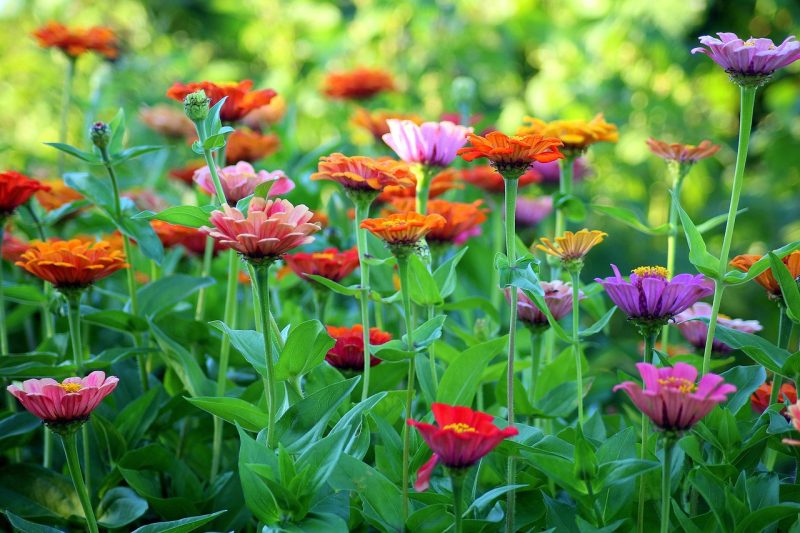
Zinnias offer an explosion of color, with varieties ranging from deep reds to bright pinks and yellows. They are easy to grow from seeds, bloom all summer long, and thrive under sunny conditions.
Daylilies (Hemerocallis)
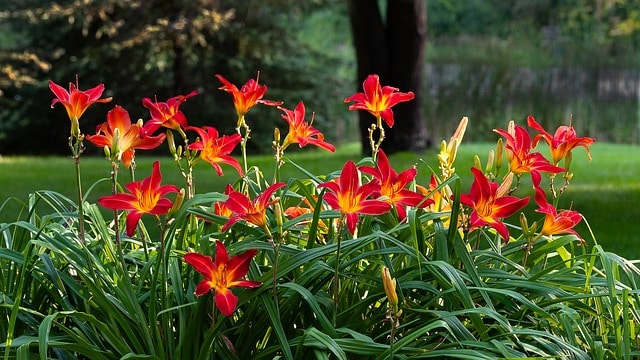
These versatile perennials are known for their hardiness and ability to thrive in various light conditions. With numerous cultivars available, daylilies can provide rich colors, with blooms that last just a day but are quickly followed by others.
Designing Your Flower Bed Layout
Once you’ve chosen your plants, the next step is planning the layout of your flower bed. A well-organized layout not only ensures that each plant has enough space to flourish but also enhances visual appeal.
View this post on Instagram
Doesn’t that look like such a welcoming sight? The layers of color here are just stunning. I’m really loving the way the blues in the salvia complement the warmer tones of those Black-Eyed Susans and the marigolds in front. It feels vibrant and cheerful without being chaotic. I think incorporating varying heights like this would be perfect for attracting some happy bees too!
View this post on Instagram
Have you ever dreamed of just pure, unadulterated color? This idea could be perfect, I adore how these vibrant ranunculus create such a happy and inviting feel. A mix of warm tones, like reds, oranges, and yellows, with pops of pink and white really makes this design so so unique. It looks like this particular field is in a warm climate that is relatively flat with plenty of tall palm trees so that could influence how something like this would look in your own garden, but the effect could still be really special. Just imagine walking through your garden and being totally surrounded by this explosion of blooms.
View this post on Instagram
How about creating a cottage-garden vibe bursting with vibrant colors? I just love how this design uses a mix of oranges, purples, and pinks for a cheerful and welcoming feel. Notice the different heights and textures in the plants — a bit of vertical interest really makes the space pop! This would be gorgeous with a small decorative building as a backdrop. This approach is easy to do and it is low maintenance, what’s not to love?
View this post on Instagram
How about this for a full-sun spectacle? I love the idea of creating a path through a sea of vibrant colors like this. Imagine strolling along a small path bordered by rows of bright pink and purple asters with that awesome barn as a backdrop. You could mix and match flowers to create a colorful garden masterpiece that blooms all season long and really brightens up your space. It feels like a dream to walk through these type of gardens.
View this post on Instagram
This kind of takes my breath away, doesn’t it? I’m really drawn to the raised beds, it feels so organized but also abundant. The gravel pathways make it feel like you could just wander and get lost in all the blooms. I love how the colors pop against the muted tones, especially those fiery reds and yellows. And you’ve got some structures in place for flowers that climb for interest at different heights.
View this post on Instagram
Isn’t this flower bed dreamy? I love how it feels almost wild, but still intentional. The mix of dahlias and verbena creates such a cottage garden vibe. Plus, the trellis in the back is a great way to add some vertical interest and height. Imagine wandering through a sea of these colors, pure joy!
View this post on Instagram
Okay, so this is kind of a cottage-style dream, right? The full, overflowing flower beds really create a sense of abundance. Plus, adding different evergreen shrubs gives a sense of structure and keeps it interesting year-round. It’s also cool how the window boxes mimic the colors below, tying everything together. A design like this would definitely make your house the envy of the neighborhood!
View this post on Instagram
Isn’t this flower bed so cheerful? I am particularly drawn to the way the design plays with color, layering the shades from those cool blues up to the bright yellows so pretty! The varied heights create a nice visual flow, and using similar flower shapes throughout really ties it all together. It just feels so vibrant and welcoming, doesn’t it? I think this could be modified for so many spaces and I can’t wait to see you try it out!
View this post on Instagram
I really like the idea of creating a raised bed with a built-in trellis, it just gives everything some extra dimension. The combination of cascading flowers from hanging baskets with the lower plants creates a lovely sense of abundance. Also how smart is it to combine flowers and herbs! I can just imagine how great it smells over there. Maybe it could work for you too… what do you think?
View this post on Instagram
Looking for a burst of color? How about something inspired by this vibrant flower bed? All these different blooms create such a cheerful and energetic feel, right? You could easily recreate this with a mix of Zinnias, Petunias, and maybe some Coneflowers. Just imagine all the butterflies it would attract, too! This is the perfect look for a sunny spot you want to brighten up.
View this post on Instagram
How about adding a playful touch with these colorful wishing wells? They’re not just super cute, but also perfect for showing off vibrant flowers that love the sun. Imagine these pops of color lining your garden path, each overflowing with blooms. They’re easy to build and totally customizable to match your own style. Plus, you can even add little lights for an evening glow!
View this post on Instagram
I just love how this design hugs the lawn; it’s so inviting and natural. The variety in textures and colors creates a really full and interesting look, don’t you think? The pops of bright pink and red against the soft white is so appealing. Plus, adding that ornamental grass and the rock? So simple but so effective in adding visual interest! It looks pretty low maintenance, too, which is always a win.
View this post on Instagram
Isn’t this flowerbed inspiring! I love the varying heights and textures, from those tall evergreens in the back to the colorful blooms in the front. The mix of purples, pinks, yellows and whites really pops, too; especially those daisy looking ones which seem to tie it all together. The stone edging is a nice, clean touch that defines the space and keeps the grass at bay. Maybe you could try something similar with some of your favorite full-sun perennials!
View this post on Instagram
Here’s one that just feels classic and timeless, right? The contrast of that frothy, white alyssum spilling over the edge creates such a soft, inviting border, it gives off this cottage-garden vibe! And layering in the pink and purple flowers behind it really adds depth and a pop of color. It’s anchored by those neat, green shrubs, making it feel structured and intentional. It really shows how simple choices done well can be super effective!
View this post on Instagram
Okay, how about channeling a little cottagecore vibe with a riot of colorful tulips and daffodils? I love how casual it feels, like you can just throw down a blanket and relax right in the middle of it. Planting a variety of colors and textures would definitely add that dreamy, whimsical feel. Imagine sipping lemonade under that adorable fringed umbrella… pure bliss! I bet you could make a similar relaxing flower bed, wouldn’t that be great!
View this post on Instagram
If you’re looking for something vibrant and full, this could be it! I love how the big rocks create a natural border to separate the plants from the lawn behind, and those cute little lights add a subtle glow after dark. The pops of red and yellow would definitely catch the eye, plus the silvery foliage softens everything and adds texture. Imagine how cheerful this would look all summer long! Maybe I’ll even try something similar myself!
View this post on Instagram
I really love how this flower bed design uses different heights to create visual interest. The taller evergreen shrubs add structure, while the colorful flowers in the middle provide a pop of color and it’s so full and lush. A border of low-growing white flowers really ties everything together, giving it a polished look. And those hanging baskets? They just add that extra touch of charm that makes a house feel like a home. What a welcoming front yard, don’t you think?
Layering Heights
Consider the heights of your plants. Taller plants should be positioned at the back of the flower bed, with progressively shorter plants in front. This arrangement creates depth and ensures that all your blooms can be seen easily. For example, if you are using coneflowers, place them behind a row of shorter zinnias or pansies.
Color Cohesion
Think about your color palette when designing your flower bed. Group plants with complementary colors together to create a harmonious look. For example, yellow black-eyed Susans paired with purple coneflowers can create a striking contrast. Alternatively, a monochromatic scheme using various shades of blue or white can evoke a serene atmosphere.
Considering Bloom Times
To maintain a blooming display throughout the growing season, choose a mix of plants with different blooming times. Early risers like tulips or daffodils can give way to summer bloomers like zinnias and lavender, while fall favorites such as asters can extend the beauty well into autumn.
Incorporating Hardscaping Elements
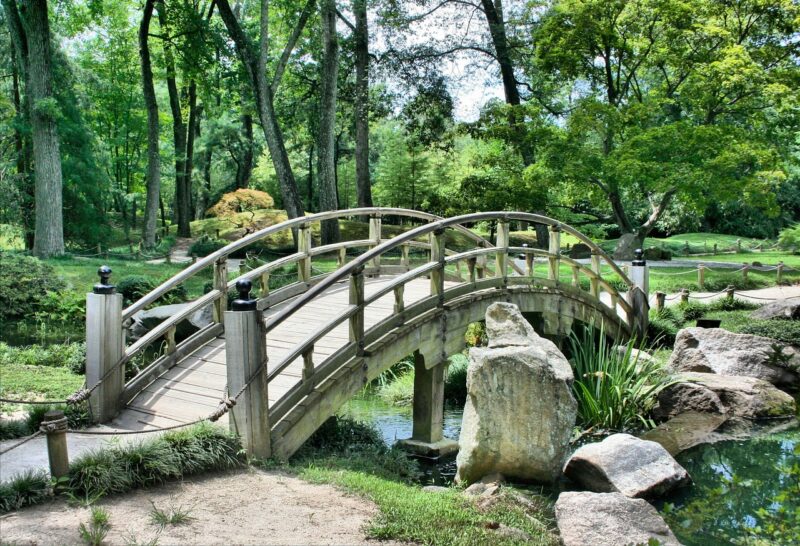
To add interest and texture to your flower bed, consider incorporating hardscaping elements. Pathways, edging, and decorative stones can define the space and create a more structured look. Here are a few ideas:
Edging with Natural Materials
Using logs, stones, or bricks to edge your flower bed not only sets boundaries but also creates a natural aesthetic. Natural materials blend seamlessly with the garden and help retain soil within the bed, facilitating better moisture retention for your plants.
Adding Pathways
If your flower bed is expansive, consider adding pathways for accessibility. Gravel, decomposed granite, or stepping stones can create charming walkways that make it easy to tend to your plants while also allowing for a leisurely stroll.
Decorative Features
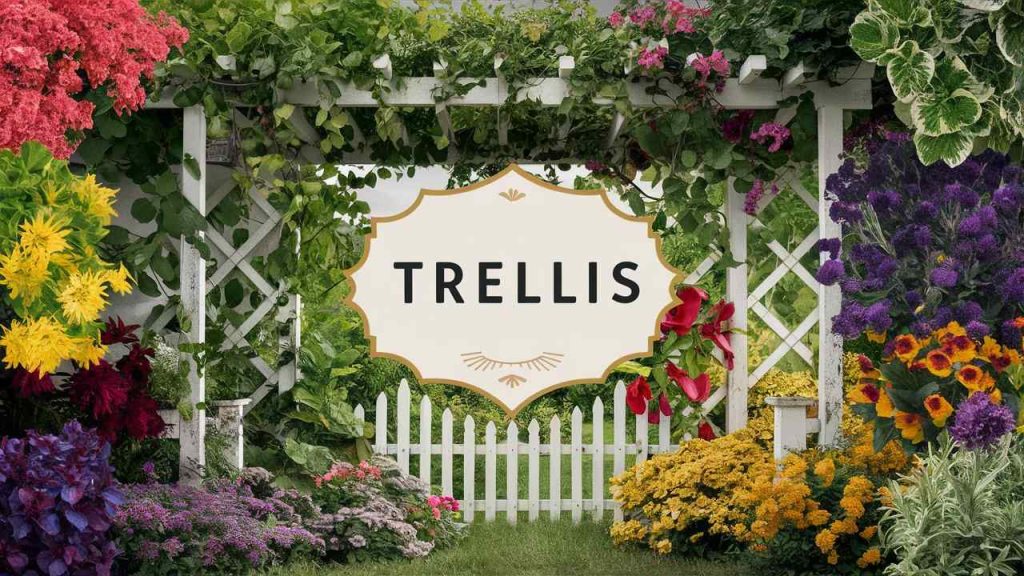
Think about including decorative features like birdbaths, trellises, or garden gnomes to add personality to your flower bed. These elements can serve as focal points and contribute to the overall ambiance of your garden space.
Understanding Full Sun Conditions
Before diving into ideas for crafting your full sun flower bed, it’s essential to understand what “full sun” means in gardening terms. A location designated as full sun receives direct sunlight for at least six to eight hours a day. Many flowering plants thrive under these conditions, making them excellent choices for a vibrant, colorful landscape.
Maintenance Tips for a Full Sun Flower Bed
Creating a beautiful flower bed requires ongoing care and attention. With proper maintenance, your flower bed can flourish and remain a stunning centerpiece throughout the growing season.
Watering Wisely

In full sun, it’s crucial to water your flowers adequately, especially during hot spells. Early morning is the best time to water, allowing plants to take in moisture before the sun heats up and evaporates it. Understanding the specific watering needs of each plant will help you create a thriving oasis.
Mulching
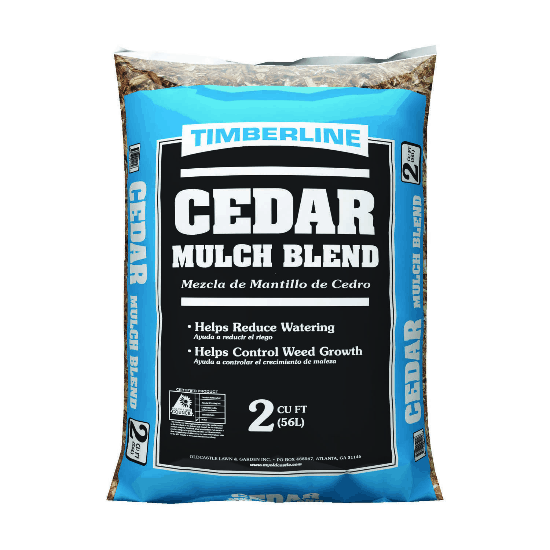
Applying mulch around your plants helps retain soil moisture and suppress weeds. Organic mulches such as shredded bark or straw can break down over time, enriching the soil. Refreshing your mulch annually or biannually is a good practice.
Deadheading

To encourage continuous blooming, regularly deadhead spent flowers by removing the faded blooms. This practice can spur new growth and prolong flowering, ensuring that your flower bed remains vibrant and lively.
Pest Control

Monitor your flower bed for pests or diseases. Many plants in sunny areas can resist typical problems, but vigilant observation is key. Using organic methods, like neem oil or insecticidal soap, can help manage any infestations.
Seasonal Touches
Consider how your full sun flower bed can change with the seasons. By incorporating seasonal decorations or plantings, you can maintain visual interest throughout the year.
Spring Blooms
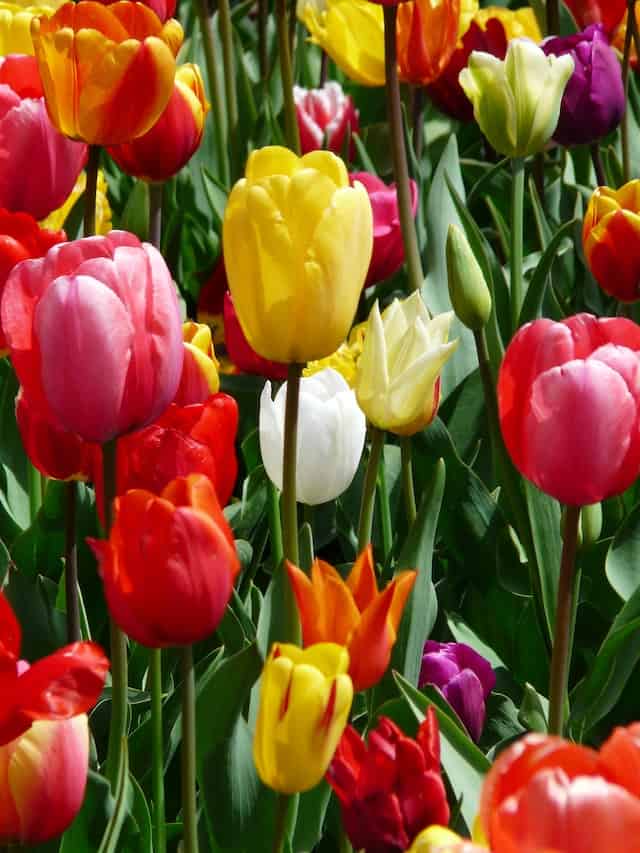
In early spring, consider planting spring bulbs that will provide a burst of color before summer flowers take over. Muscari, tulips, and hyacinths can brighten up the flower bed in pastel and vibrant hues.
Summer Festivities
As summer hits, add decorations like colorful garden flags or whimsical statues to enhance your flower bed. Arrange peonies, dahlias, and sunflowers for a holiday barbecue or garden party, creating a warm, inviting atmosphere.
Autumn Glory
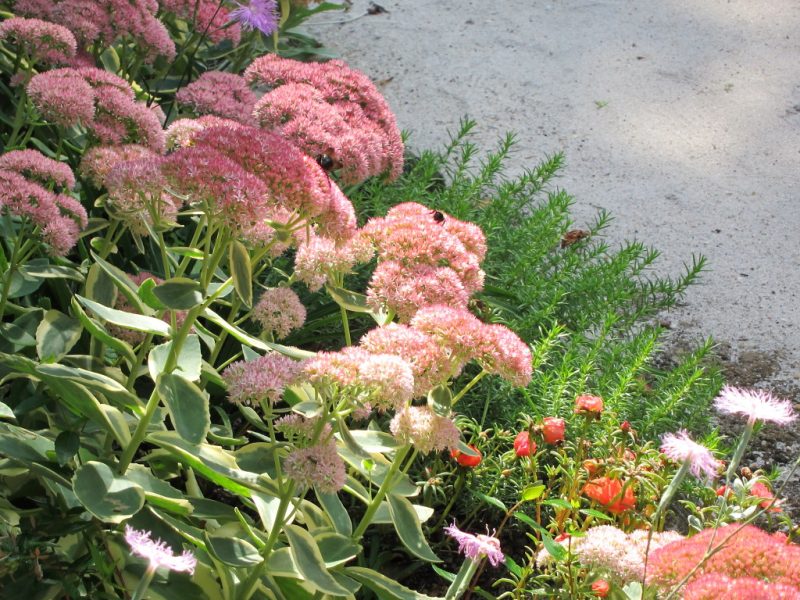
In the fall, incorporate ornamental grasses or late-blooming perennials such as sedum that can provide a lovely transition into winter. Their textures and colors can add richness to your landscape as other flowers fade.
Winter Resilience
Consider adding evergreens to your flower bed design, which will provide structure and color during the cold months. Spruce, holly, or winter-blooming plants can sustain a lively presence even when most flowers are dormant.
Attracting Pollinators and Beneficial Insects
One of the beautiful aspects of a full sun flower bed is its ability to attract a variety of pollinators, which support our ecosystems. Designing your flower bed with this in mind not only helps your garden thrive but also contributes positively to the environment.
Diverse Plant Selection
By including a mix of flowering plants, you can attract various pollinators such as bees, butterflies, and hummingbirds. Each species has different preferences, so select flowers that bloom at different times and provide diverse shapes and sizes.
Native Plants
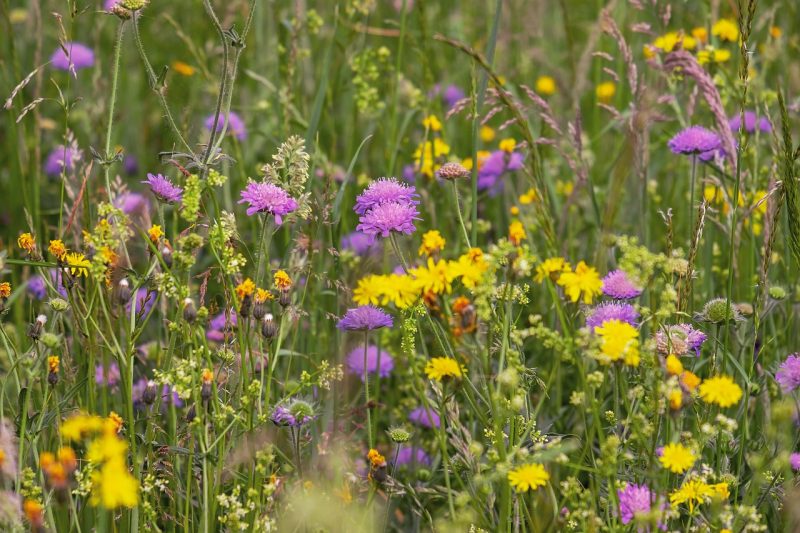
Incorporating native plants into your flower bed helps create a balanced habitat that attracts local insects and wildlife. Native plants are often more resilient to local pests and diseases and require less maintenance than exotic varieties.
Avoiding Pesticides
To create a pollinator-friendly environment, minimize or eliminate the use of pesticides that can harm beneficial insects. Opt for organic pest control methods and encourage a balanced ecosystem in your flower bed.
Bringing It All Together: A Full Sun Flower Bed Project
Now that we’ve explored various elements of creating a beautiful full sun flower bed, it’s time to put your ideas into action! Here’s a step-by-step guide that incorporates everything we’ve discussed:
Site Selection: Choose a location that receives at least six to eight hours of direct sunlight daily.
Soil Preparation: Test your soil for pH and nutrient levels. Amend as necessary, ensuring it’s well-draining and healthy.
Plant Selection: Choose a mix of perennials and annuals based on your desired color scheme, bloom times, and height.
Design Layout: Map out your arrangement using graph paper or through an online garden planner. Implement layered heights, considering color and textural combinations.
Hardscaping: Add edging, pathways, or decorative elements to frame your flower bed and make it more inviting.
Planting: Follow spacing recommendations for each type of plant. Plant in groups for visual effect and to encourage interaction among plants.
Watering: Water thoroughly at the time of planting and establish a regular watering schedule.
Maintenance: Implement a deadheading routine and monitor for pests, adjusting care as needed throughout the growing season.
Seasonal Adjustments: Change your flower bed décor and plant selection with the seasons for ongoing interest and variety.
Conclusion
Creating a full sun flower bed is a rewarding project that brings color, beauty, and life to your garden. By choosing the right plants, designing an engaging layout, and committing to regular maintenance, you can cultivate a stunning display that flourishes under the sun. Remember, gardening is an evolving process—a chance to experiment, learn, and enjoy the natural world around you. So dive in and let your creativity shine as you transform your outdoor space into a radiant botanical paradise.


